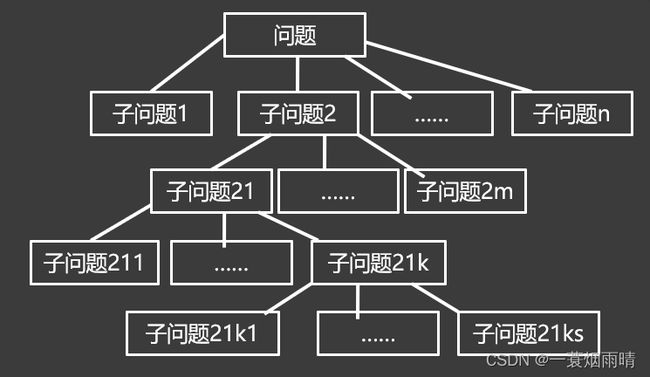C++语法基础(7)——结构化程序设计
文章目录
- 结构化程序设计
-
- 结构化程序设计
- 枚举类型与头文件
-
- 枚举类型
- 头文件
- 石头剪子布游戏完整程序
- 库与预处理
-
- 设计自己的库
- 随机函数库的设计与实现
- 随机函数库的应用
结构化程序设计
结构化程序设计
设计阶段
自顶向下的分解,每个小问题设计为一个函数,公共小问题可以设计成一个库
- 顺序
- 分支
- 循环
枚举类型与头文件
枚举类型
类型定义格式
enum 枚举类型名 {元素表};
石头、剪子、布中的枚举类型
- 用户输入值的类型:enum p_r_s { paper, rock, scissor, game, help, quit } ;
- 比较结果类型:enum outcome { win, lose, tie } ;
枚举类型变量的定义
p_r_s select;
枚举类型变量的使用 - 赋值: select = paper;
- 比较:paper < rock 比较这两个值的内部表示
- 枚举类型不能直接输入输出
枚举类型的内部表示 - 采用编码表示:默认用0代表pape, 1代表rock ,…,5 表示quit
- 指定编码值
- 希望从1而不是0开始编号,可以这样定义enum p_r_s { paper = 1, rock, scissor, game, help, quit } ;
- 可以从中间某一个开始重新指定,如enum p_r_s { paper, rock = 5, scissor, game, help, quit } ;
enum studentNum{1001, 1002, 1003, 1004}是不合法的枚举常量,因为大括号{}中是一个用逗号分隔的标识符列表。标识符由字母(A-Z,a-z)、数字(0-9)、下划线“_”组成,并且首字符不能是数字。
头文件
- 包含所有的符号常量定义、类型定义和函数原型声明
- 每个模块都include这个头文件
- 链接时,编译器会发现这些类型定义、符号常量和函数原型的声明在程序中反复出现多次
- 解决方法 需要用到一个新的编译预处理命令:
#ifndef 标识符
…
#endif
头文件实现格式
#ifndef _name_h
#define _name_h
头文件真正需要写的内容
#endif
石头、剪刀、布游戏的头文件
// 文件:p_r_s.h
// 本文件定义了两个枚举类型,声明了本程序包括的所有函数原型
#ifndef P_R_S
#define P_R_S
#include - 在
cpp文件内include自定义的头文件,例如myMath.h,则代码是:#include "myMath.h" - c++支持将
cpp实现代码混入头文件中,来简化代码编写,c++程序的头文件后缀名是.hpp - 在头文件.h中如果要声明一个
int型变量x,需要在代码int x;之前添加extern关键字,并在.cpp文件中定义int x;
石头剪子布游戏完整程序
主模块的实现
// 文件:main.cpp
// 石头、剪子、布游戏的主模块
#include "p_r_s.h"
int main()
{
outcome result;
p_r_s player_choice, machine_choice;
// seed the random number generator
srand(time(NULL));
while ((player_choice = selection_by_player()) != quit)
switch (player_choice)
{
case paper:
case rock:
case scissor:
machine_choice = selection_by_machine();
result = compare(player_choice, machine_choice);
report(result);
break;
case game:
prn_game_status();
break;
case help:
prn_help();
}
prn_game_status();
return 0;
}
Select模块的实现
//文件:select.cpp
//包括机器选择selection_by_machine和玩家选择selection_by_player函数的实现
#include "p_r_s.h"
p_r_s selection_by_machine()
{
int select = (rand() * 3 / (RAND_MAX + 1));
cout << " I am ";
switch (select)
{
case 0:
cout << "paper. ";
break;
case 1:
cout << "rock. ";
break;
case 2:
cout << "scissor. ";
break;
}
return ((p_r_s)select);
}
p_r_s selection_by_player()
{
char c;
p_r_s player_choice;
prn_help();
cout << "please select: ";
cin >> c;
switch (c)
{
case 'p':
player_choice = paper;
cout << "you are paper. ";
break;
case 'r':
player_choice = rock;
cout << "you are rock. ";
break;
case 's':
player_choice = scissor;
cout << "you are scissor. ";
break;
case 'g':
player_choice = game;
break;
case 'q':
player_choice = quit;
break;
default:
player_choice = help;
break;
}
return player_choice;
}
Compare模块的实现
//文件:compare.cpp
//包括compare函数的实现
#include "p_r_s.h"
outcome compare(p_r_s player_choice, p_r_s machine_choice)
{
outcome result;
if (player_choice == machine_choice)
return tie;
switch (player_choice)
{
case paper:
result = (machine_choice == rock) ? win : lose;
break;
case rock:
result = (machine_choice == scissor) ? win : lose;
break;
case scissor:
result = (machine_choice == paper) ? win : lose;
}
return result;
}
Print模块的实现
//文件:print.cpp
//包括所有与输出有关的模块。
//有prn_game_status,prn_help和report函数
#include "p_r_s.h“
static int win_cnt = 0, lose_cnt = 0, tie_cnt = 0; //模块的内部状态
void report(outcome result)
{
switch (result)
{
case win:
++win_cnt;
cout << "You win. \n";
break;
case lose:
++lose_cnt;
cout << "You lose.\n";
break;
case tie:
++tie_cnt;
cout << "A tie.\n";
break;
}
}
void prn_game_status()
{
cout << endl;
cout << "GAME STATUS:" << endl;
cout << "win:" << win_cnt << endl;
cout << "Lose:" << lose_cnt << endl;
cout << "tie:" << tie_cnt << endl;
cout << "Total:" << win_cnt + lose_cnt + tie_cnt << endl;
}
void prn_help()
{
cout << endl
<< "The following characters can be used:\n"
<< " p for paper\n"
<< " r for rock\n"
<< " s for scissors\n"
<< " g print the game status\n"
<< " h help, print this list\n"
<< " q quit the game\n";
}
库与预处理
设计自己的库
库的概念
- 库:常用的工具
- 库的主题:同一个库中的函数都应该是处理同一类问题,自己设计的库也要有一个主题
- 库的通用性:在某一应用程序中提取库内容时应尽量考虑到兼容更多的应用,使其他应用程序也能共享这个库
库的设计和实现
- 设计库的接口:库的用户必须了解的内容,包括库中函数的原型、这些函数用到的符号常量和自定义类型,接口表现为一个头文件
- 设计库中的函数的实现:表现为一个源文件
- 库的这种实现方法称为信息隐藏
随机函数库的设计与实现
1.库功能
- 生成low到high之间的随机数:
int RandomInteger(int low, int high) - 初始化函数:
RandomInit()实现设置随机数种子的功能
2.接口文件
- 头文件的格式
#ifndef _name_h
#define _name_h
头文件真正需要写的内容
#endif
- 注释 头文件头上有段注释,说明库的主题、功能。每个函数声明前有一段注释,告诉用户如何使用这些函数
3.随机函数库接口文件
//文件:Random.h
//随机函数库的头文件
#ifndef _random_h
#define _random_h
//函数:RandomInit
//用法:RandomInit()
//作用:此函数初始化随机数种子
void RandomInit();
//函数:RandomInteger
//用法:n = RandomInteger(low, high)
//作用:此函数返回一个 low 到 high 之间的随机数,包括 low 和 high
int RandomInteger(int low, int high);
#endif
4.库的实现
- 实现文件名:与头文件的名字是相同
- 实现文件的格式
- 注释(这一部分简单介绍库的功能)
include此cpp文件所需的头文件- 每个实现要包含自己的头文件,以便编译器能检查函数定义和函数原型声明的一致性
- 每个函数的实现代码(在每个函数实现的前面也必须有一段注释)
5.随机函数库实现文件
//文件:Random.cpp
//该文件实现了Random库
#include 6.统计学函数库接口文件
//文件:statistics.h
//统计学函数库
#ifndef _statistics_h
#define _statistics_h
//函数:Average
//用法:double ave = Average(double*, double*)
//作用:计算从数组中所有实数的算数平均值
double Average(double *begin, double *end);
//函数:MinMax
//用法:MinMax(double *, double *, double &, double &)
//作用:统计数组的最小最大值,并且通过引用传参得到结果
void MinMax(double *begin, double *end, double &Min, double &Max);
//函数:Median
//用法:double med = Median(double*, double*)
//作用:计算从数组中所有实数的中位数
double Median(double *begin, double *end);
//函数:Mode
//用法:double mod = Mode(double*, double*)
//作用:计算从数组中所有实数的众数
double Mode(double *begin, double *end);
#endif
随机函数库的应用
将龟兔赛跑的模拟问题划分成主模块、移动模块、输出模块分别处理,是运用了自顶向下分解的设计思路。
使用程序员自己定义的库函数的时候,需要在使用之前include本地头文件.h文件,并且编译时需要将主程序与库函数的实现文件.cpp文件链接起来
主模块
#include "Random.h" //包含随机数库
#include 移动模块
// 文件名:move.cpp
#include "Random.h" //本模块用到了随机函数库
int move_tortoise()
{
int probability = RandomInteger(0, 9); //产生0到9之间的随机数
if (probability < 5)
return 3; //快走
else if (probability < 7)
return -6; //后滑
else
return 1; //慢走
}
int move_hare()
{
int probability = RandomInteger(0, 9);
if (probability < 2)
return 0; //睡觉
else if (probability < 4)
return -9; //大后滑
else if (probability < 5)
return 14; //快走
else if (probability < 8)
return 3; //小步跳
else
return -2; //慢后滑
}
Print模块
// 文件名:print.cpp
#include 
